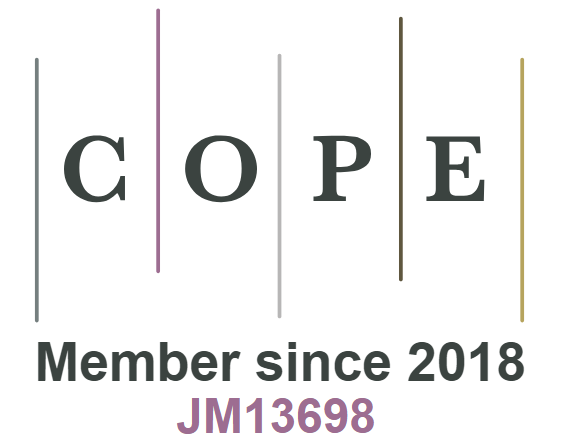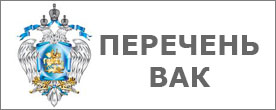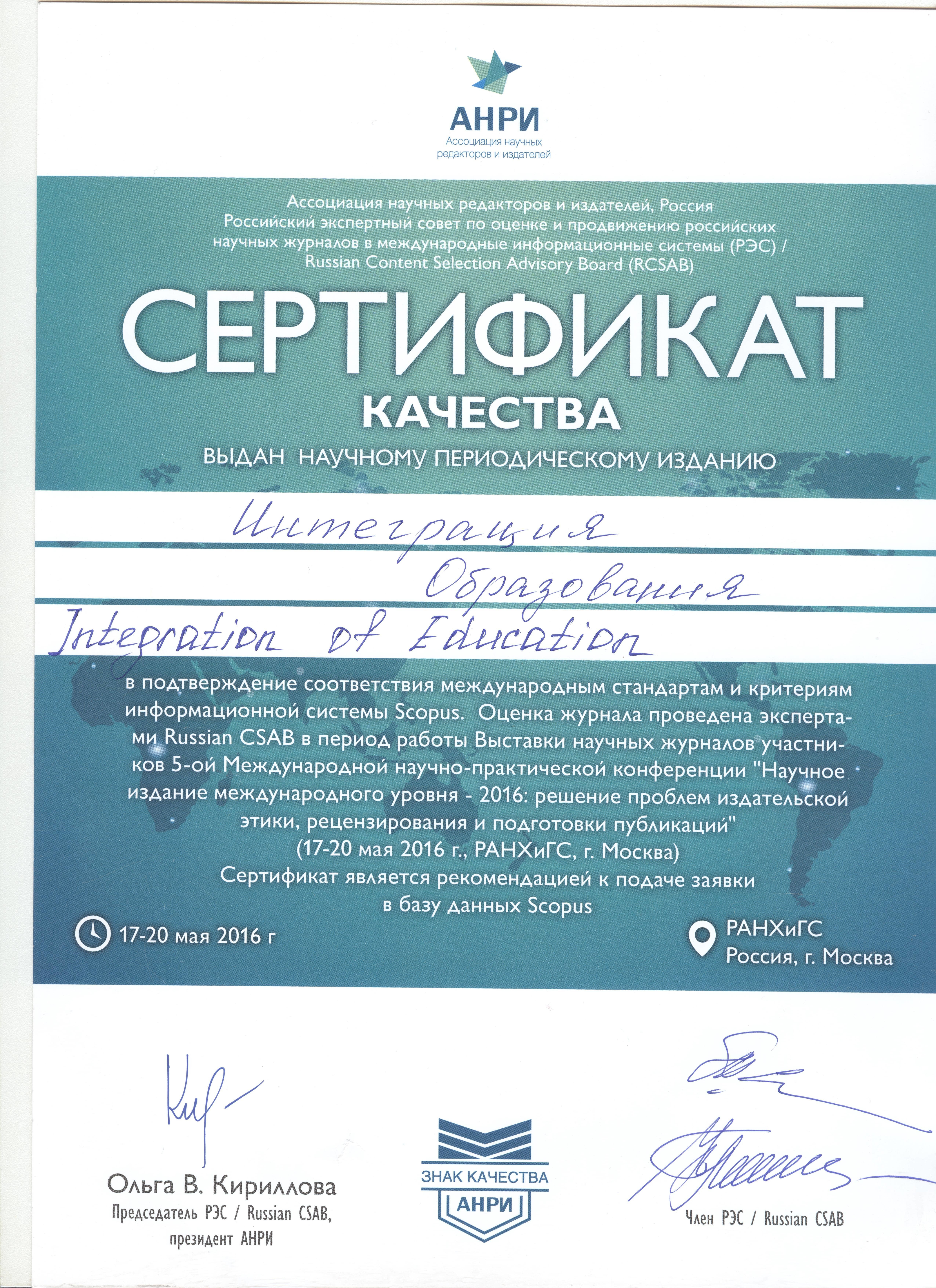DOI: 10.15507/1991-9468.110.027.202301.064-081
Criteria for Assessing the Effectiveness of Blended Learning Technologies Used at the University
Nina V. Bordovskaia
Dr.Sci. (Ped.), Professor, Member of the Russian Academy of Sciences, Head of Educational Psychology and Pedagogy Department, Saint-Petersburg University (7–9 Universitetskaya Emb., Saint Petersburg 199034, Russian Federation), ORCID: https://orcid.org/0000-0003-4425-6326, Scopus ID: 56455360300, Researcher ID: F-8504-2015, This email address is being protected from spambots. You need JavaScript enabled to view it.
Elena A. Koshkina
Dr.Sci. (Ped.), Associate Professor, Professor of Pedagogy and Psychology Department of Humanities, Northern (Arctic) Federal University named after M. V. Lomonosov (17 Severnoy Dviny Emb., Arkhangelsk 163002, Russian Federation), ORCID: https://orcid.org/0000-0003-1590-1752, Scopus ID: 57194217155, Researcher ID: S-5627-2016, This email address is being protected from spambots. You need JavaScript enabled to view it.
Lia A. Melkaya
Research Engineer of the Faculty of Psychology, Saint-Petersburg University (7–9 Universitetskaya Emb., Saint Petersburg 199034, Russian Federation), ORCID: https://orcid.org/0000-0002-2156-8629, This email address is being protected from spambots. You need JavaScript enabled to view it.
Marina A. Tikhomirova
Cand.Sci. (Psychol.), Associate Professor of Educational Psychology and Pedagogy Department, Saint-Petersburg University (7–9 Universitetskaya Emb., Saint Petersburg 199034, Russian Federation), ORCID: https://orcid.org/0000-0001-5940-8367, Scopus ID: 57205217060, Researcher ID: E-4940-2018, This email address is being protected from spambots. You need JavaScript enabled to view it.
Abstract
Introduction. The active use of blended learning technologies in universities has highlighted the problem of their effectiveness. The solution to this problem envisages further clarification of the distinctive features of blended learning technology and selection of performance indicators. The purpose of research paper is to justify the selection and define assessment criteria for effectiveness of blended learning technology, and to develop a multi-level system of indicators of their manifestation in university educational practice.
Materials and Methods. Methods of systematic analysis of scholarly literature, grouping scientific information, modeling, point-rating scaling, comparison and methods of mathematical statistics. It also includes the results of an online survey conducted among students and teachers at Russian universities and the results of a content analysis of the open-ended question “Blended learning technology is effective if ...” of the “Unfinished sentences” methodology.
Results. Within the framework of the complex approach, the selection of effective, didactic and resource criteria for assessing the effectiveness of blended learning technology have been substantiated. It was revealed that students prefer the didactic, and then the resource criterion in assessing the effectiveness of blended learning technologies, and teachers consider the resource criterion to be a priority, followed by the didactic one.
Discussion and Conclusion. The research results contribute to the development of scientific ideas about the system of criteria for assessing the effectiveness of blended learning technology and increasing the level of reasonability of managerial decisions on their application in the higher education system. The article materials will be useful for university teaching staff and managers, as well as researchers concerned with analysis and assessment of blended learning and modern educational technologies’ effectiveness.
Keywords: traditional and digital education technologies, effectiveness of blended educational technologies, effective criteria, didactic criteria, resource criteria
Funding: The work was supported by the Russian Science Foundation, contract No. 22-28-00013.
Acknowledgments: The authors express their gratitude to the editors and reviewers for a thoughtful and deep reading of the work and for these comments, which made it possible to improve its quality
Conflict of interests: The authors declare no conflict of interest.
For citation: Bordovskaia N.V., Koshkina E.A., Melkaya L.A., Tikhomirova M.A. Criteria for Assessing the Effectiveness of Blended Learning Technologies Used at the University. Integration of Education. 2023;27(1):64–81. doi: https://doi.org/10.15507/1991-9468.110.027.202301.064-081
All authors have read and approved the final manuscript.
Submitted 16.09.2022; revised 10.01.2023;
accepted 16.01.2023.
Contribution of the authors:
N. V. Bordovskaia – development of the research concept; conducting a critical analysis of materials; design development; scientifically based selection of criteria for evaluating the effectiveness of the use of blended learning technologies in university educational practice; writing the text; approval of the final version of the article.
E. A. Koshkina – search for analytical materials in domestic and foreign sources conducting; conducting a critical analysis of materials; scientifically based selection of indicators of the manifestation of the selected criteria for evaluating the effectiveness of blended learning technologies; drawing conclusions; writing a text.
L. A. Melkaya – search for analytical materials in domestic and foreign sources conducting an online survey at the Northern (Arctic) Federal University named after M.V. Lomonosov and analyzing the data obtained; preparing drawings; writing a text.
M. A. Tikhomirova – selection and development of methods of the empirical part of the study; conducting an online survey at St. Petersburg State University and Google, statistical processing of the empirical materials obtained; analysis of the data obtained and their interpretation; writing and translating the text into English.

This work is licensed under a Creative Commons Attribution 4.0 License.





























